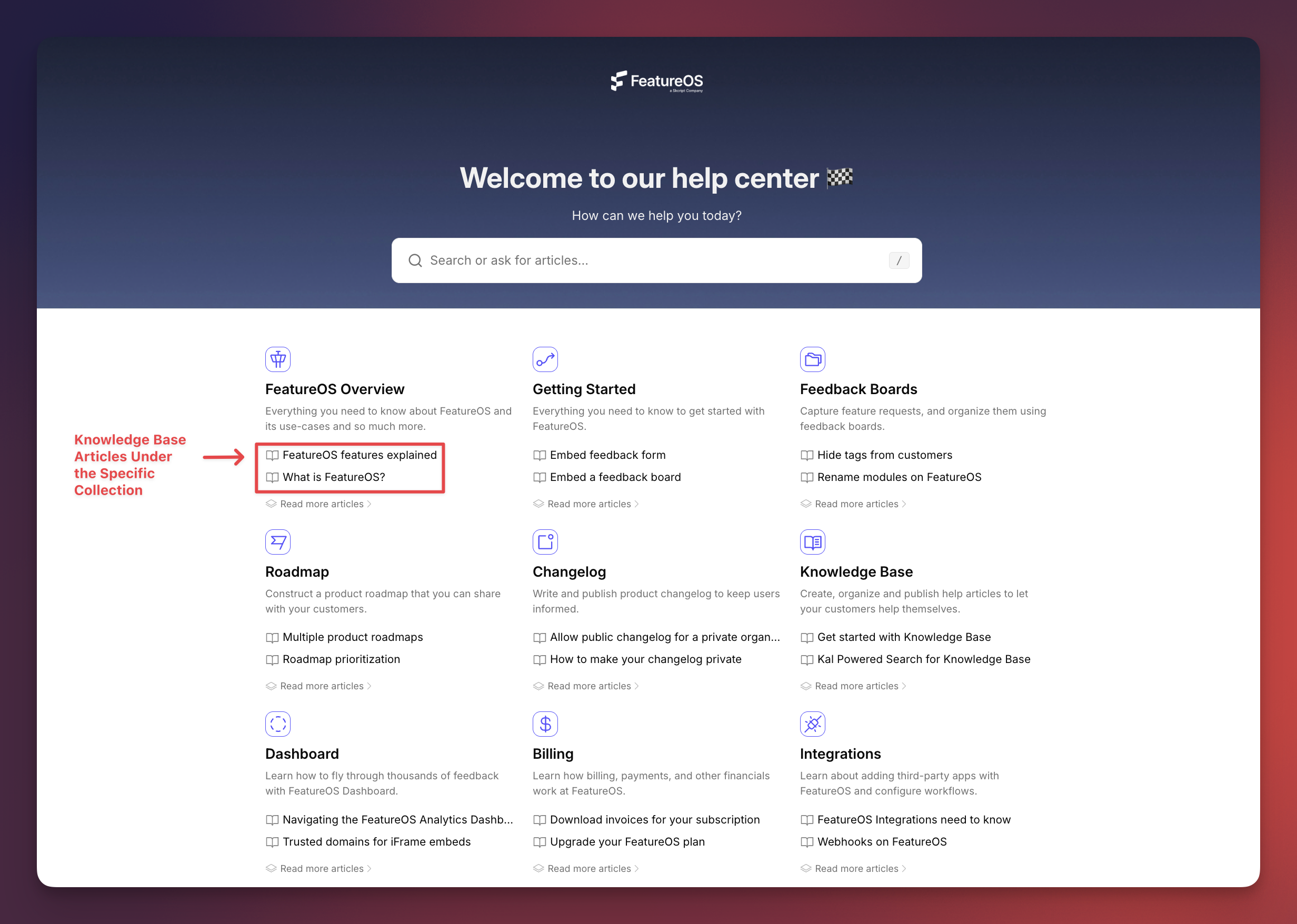FeatureOS Knowledge Base (KB) is designed to help you create an organized, user-friendly library of information. To keep things structured, the KB is divided into Collections and Articles. While they work together seamlessly, it’s important to understand the difference between them so you can build a clear and effective knowledge hub.
What is a Knowledge Base Collection?
A Collection is the top-level category in your Knowledge Base. You can think of it as a folder or chapter that holds multiple articles.
Key Characteristics of Collections:
Organizational Unit: Collections serve as containers for related articles.
Navigation-Friendly: They help users browse by category without feeling overwhelmed.
Theme-Oriented: Each collection should cover one major theme, feature set, or stage of the user journey.
Visibility Settings: You can decide whether a collection is public, private, or unlisted.
Examples of Collections:
Getting Started
Using Feedback Boards
Account & Billing
Integrations
Why Collections Matter:
They give your Knowledge Base structure and hierarchy.
They allow users to quickly find the right type of content without having to search.
They make scaling easier for new articles always have a place to go.

What is a Knowledge Base Article?
An Article is an individual entry inside a collection. Articles contain the actual knowledge content, the instructions, explanations, or answers your users are looking for.
Key Characteristics of Articles:
Content-Focused: Articles hold the actual information.
Searchable: Articles are indexed, making them easy to find via search.
Flexible Formatting: You can add headings, lists, images, videos, and links.
Updatable Anytime: Articles can be edited as your product evolves.
Examples of Articles:
How to Create Your First Board
Setting Up Single Sign-On (SSO)
Understanding Your Subscription
Exporting Feedback Data
Why Articles Matter:
They deliver actionable information, step-by-step guides, and FAQs.
They reduce support tickets by giving users self-service answers.
They ensure consistent knowledge delivery across your team and customers.

How Collections and Articles Work Together
Think of your Knowledge Base as a library:
Collections = Bookshelves, organized by category.
Articles = Books on those shelves, each covering one specific topic.
Example Structure:
Collection: Getting Started
Article: Creating Your First Workspace
Article: Inviting Team Members
Article: Setting Up Notifications
Collection: Feedback Boards
Article: Submitting a New Post
Article: Voting on Posts
Article: Managing Internal Feedback
This structure makes it simple for new users to start with high-level categories and drill down into the exact answers they need.
Quick Comparison Table
Feature | Collection | Article |
|---|---|---|
Purpose | Organize and group articles | Provide detailed content |
Structure | Acts as a category/folder | Lives inside a collection |
Visibility | Public, Private, or Unlisted | Inherits collection visibility |
Examples | Billing, Getting Started | Resetting Password |
Content Type | Titles, description of the category | Guides, FAQs, tutorials |
Summary
Collections = Categories that organize your Knowledge Base.
Articles = The actual help content inside those categories.
Together, they give your users an intuitive way to find answers quickly, reduce support load, and keep your product documentation scalable.
Need Help?
Email us at [email protected] or drop your question on our support board! 😊
Was this helpful?
